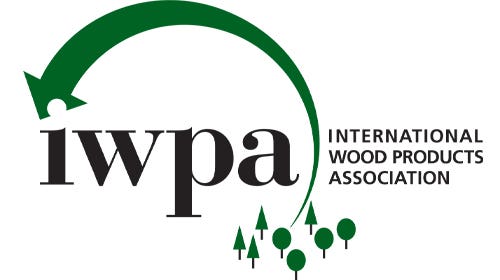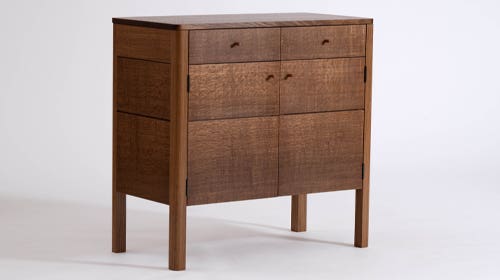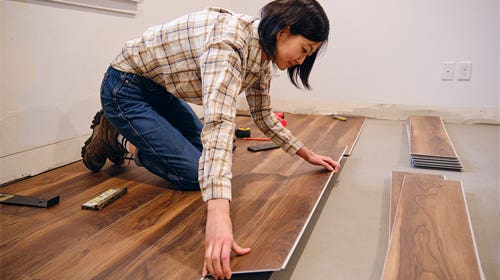Red oak market could be on the rebound
Dealers report prices have stabilized for upper grades; flooring market has bottomed out After several bleak years, there may be some good news to report about red oak. The majority…
Dealers report prices have stabilized for upper grades; flooring market has bottomed out
After several bleak years, there may be some good news to report about red oak. The majority of dealers contacted by Woodshop News voiced the opinion that the red oak market has bottomed out and may even be a bit on the rise. With wood markets for many species depressed, even this piece of minor news is being looked at as a positive.
"The 4/4 and 5/4 are very stable, the people who have the uppers are moving everything that they have," says Rick Lang of Highland Hardwoods, a wholesale and retail dealer in Brentwood, N.H. "The prices are stable with the upper grades. The common grades have come down the last four to six months a lot."
"We sell a bit of red oak, but I don't think I've seen the demand spike at all," says Dave Harris, of Parkerville Wood Products, in Manchester, Conn. "We sell it for stairs and a few and other things. I remember eight to 10 years ago, it seemed like everybody was building cabinets and everything out of red oak. I don't see that coming back at all."
Northern red oak (Quercus rubra), also known as eastern oak, is plentiful and grows in the eastern half of the United States and Canada. Trees are smaller than white oak (Quercus alba), reaching heights up to 70' with tree diameters around 3', depending on growing conditions. The tree's fruit is an acorn, and mature trees can produce up to 1,000 acorns a year.
Red oak is used primarily for cabinetry, interior trim, furniture, and decorative veneer and plywood. Lower grades of red oak are used extensively for flooring because of its high crushing strength and shock resistance. It is a good steam-bending wood, and once red oak's open pores are filled, it takes finish applications very well. The wood works fine with hand and machine tools, although when planing it may chip when the grain curves toward the edge.
"Generally speaking, flooring, like all building products, is down this year compared to other years," says Tim Locke, executive vice president of NOFMA: The Wood Flooring Manufacturers Association, formerly known as the National Oak Flooring Manufacturers Association. "Oak continues to be the most common flooring, and red oak is more common than white oak. It used to be that red and white oak represented 85 to 90 percent of the wood flooring used in residential construction. Now it is like 60 percent, replaced mainly by imported species, but to some degree by domestic non-oak species."
"I think flooring may have already bottomed out and is starting to inch its way back up," says John Sliney of Vienna Hardwoods in Vienna, Va. "The last batch that I bought was about five cents more than two months ago, but I don't buy enough of the stuff to really be able to comment on the overall market. Here, red oak is just kind of flat. Cherry and hard maple; it seems like everybody wants those two."
Red oak's heartwood is pink with a reddish tinge, and the color can vary depending on climate and soil. The sapwood is white. Red oak has a medium-to-coarse texture and is straight-grained with medium strength. The wood produces prominent rays when quartersawn, so flat-sawn and quarter-sawn stock should be separated and not used for the same project. Red oak's figure is not as attractive as the figure of white oak.
"On the supply, it has really dried up," Lang says. "There are really no surpluses of New England red oak or Northeastern red oak. One thing that is for sure; we have lost more and more sawmills in the Northeast, all over New England. It is really negatively impacting the availability of some hardwoods and I think, with red oak, losing sawmills, coupled with poor pricing, has just driven people away. There's not really great oak production around.
"The housing crisis is pretty bad," adds Locke. "The new housing market is terrible and the credit situation has caused the remodeling market to be poor. Big remodel jobs require financing and it's difficult to get financing, and banks are skittish about loaning money on equity of the housing market that is losing market. All of that is combining to make the residential market difficult, and then the Catch-22 is the weakness in the housing market is causing overall weakness in the economy in general. Between the housing market and gas, things just suck.
"It's a particularly difficult time for anybody involved in building products. That's reflected in pricing, for sure. The price for oak flooring is essentially at an all-time low. It's been lower in real dollars before, but not in inflation-adjusted dollars."
Retail prices for 100 bf of kiln-dried, 4/4 FAS red oak, surfaced on two sides, ranged from $3 to $3.60/bf in the Northeast; $2.85 to $3.30/bf in the South; $3.20 to $3.85/bf in the Midwest; and $3.85 to $4.50/bf in the West.
Wholesale prices for 1,000 bf of kiln-dried, 4/4 FAS red oak ranged from $2,550 to $3,150/mbf in the Northeast; $2,400 to $2,700/mbf in the Southeast; $2,800 to $3,150/mbf in the Midwest; and $3,750 to $4,200/mbf in the West.
Retail and wholesale prices were higher in the West because of the continuing increase in transportation costs.







